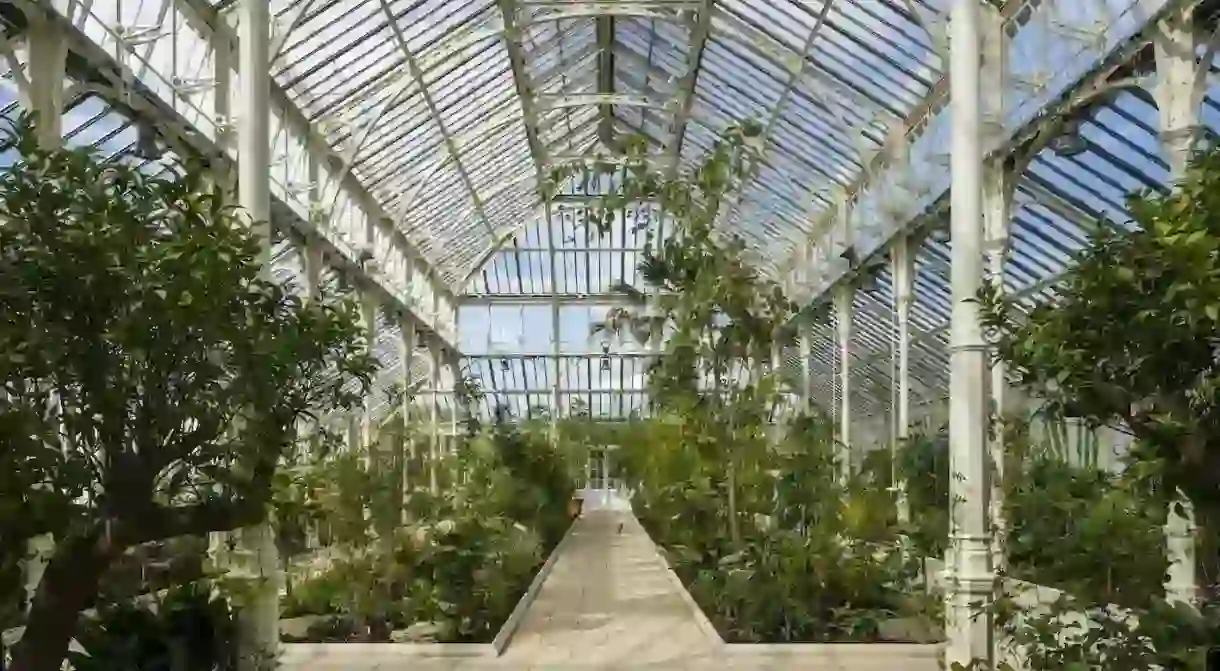The World’s Largest Victorian Glasshouse Reopens in London’s Kew Gardens

Temperate House was deemed an ‘architectural wonder’ of the 19th-century and it’s just as impressive now thanks to a £41 million, five-year renovation.
The Grade-I listed Victorian greenhouse, the largest in the world, has been restored to its former glory and was finally reopened to the public in May 2018 by naturalist David Attenborough who called it ‘breathtakingly beautiful’.

Temperate House is the big brother of the arguably more famous Palm House, the jewel in the crown of the Royal Botanic Gardens, Kew, designed by the same architect Decimus Burton. The 191 metre-long building is a glittering triumph of glass and steel, which has seen 69,000 individual components and 15,000 panes of glazing painstakingly removed, repaired and replaced as the building has been stripped back to the bare bones and totally modernised.

It’s not just the Victorian building that has been given the royal treatment. The 10,000 rare plants that have been living in the glasshouse have mainly been switched for younger specimens, with some of the more fragile residents taking refuge in a temporary greenhouse until being restored to their pride of place. One such plant includes Kew’s rarest and ‘loneliest’ plant of all, a male Wood’s cycad – a female cycad is yet to be discovered. The renovation has also ensured a better environment for safeguarding these precious plants through better ventilation and allowing more light to stream in through the new glazing, making lower-level plants more hardy.

Given Temperate House’s radical transformation and intense pruning, it’s undoubtedly the impressive iron ribs of the building that visitors will now be gazing up at rather than a lush tree canopy. ‘The time it will take for the newly propagated plants to reach maturity will offer visitors a full and unobstructed view of the incredible metal skeleton in all its glory: a cutting-edge sanctuary for plants,’ says Aimée Felton of Donald Insall Associates.

The building was an incredible feat of engineering for its time, with Burton being one of the first architects to use cement render, which sped up the building process. However, with an ambitious 5,700 square-metre volume to construct, costs spiralled out of control and it took 40 years before the building was finally completed in 1863.

While it was intended to be Kew’s shining beacon that would greet visitors as they entered the gardens, it is now considered less successful than its more modest predecessor, Palm House. The latter’s distinctive curved profile, created using a cutting-edge technique borrowed from ship building, is a technological marvel, while Temperate House is bulkier by comparison with its industrial-style blockish form.

However, this Victorian gem is still ‘breathtakingly beautiful’, as naturalist David Attenborough put it, and what’s more, its restoration has secured the future of thousands of extremely rare and endangered plants that will undoubtedly inspire many more generations to come.














